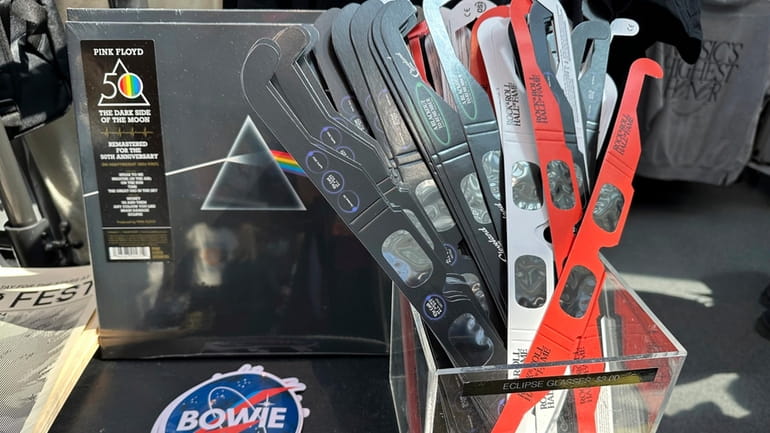Solar eclipse in New York: Last-minute preparations set for celestial event on Monday

The solar eclipse on Monday will be visible across a wide swath of New York State, and the state has been planning since October 2022 "to make sure you can experience it safely and enjoyably," Gov. Kathy Hochul said at a news conference on Sunday afternoon.
She said NASA will be running education programs in state parks to “give people a deeper understanding of the science of this incredible spectacle we will be experiencing."
Campsites in the prime viewing zone were opened early to accommodate eclipse watchers, acting Parks Commissioner Randy Simons said, and all were fully booked for Sunday night. Simons warned that it is mud season in upstate areas such as the Adirondacks, so people should not drive in the backcountry in an attempt to find a remote viewing spot.
Hochul said with New Yorkers and visitors from other states all convening in the 100-plus-mile band within the path of totality, there will be "extended traffic delays." She advised drivers to allow plenty of extra time to arrive at their viewing destination and not to pull over to watch from the side of the road, which presents a hazard to emergency vehicles that need to get through.
Police will be quick to ticket and tow cars stopped on roadsides, said Jackie Bray, commissioner of the state Division of Homeland Security and Emergency Services.
Extra tow trucks and ambulances will be deployed for those needing assistance.
There was very little traffic along the route for May Zhang of Westbury, who left Long Island at 5 a.m. Sunday to drive to Rochester. Zhang said she decided to make the trip after the earthquake on Friday.
"The earthquake was such a scary event, I thought, I have to see my daughter," who is a student at the University of Rochester, Zhang said. This will be their first full eclipse. "It’s going to be a nice event to remember."
The eclipse will be the first in these parts since 2017, but Long Island will be closer to the path of totality Monday than it was seven years ago.
The path of the eclipse will make landfall in North America at Mazatlan, Mexico, and will travel northeast through Texas, Arkansas and the Midwest before hitting western and upstate New York, then Vermont and Canada’s Maritime Provinces before it fades out somewhere over the Atlantic Ocean.
On Long Island the moon will block 90% of the sun, leaving just a sliver of light around the edge, just before 3:30 p.m.
For those planning to stay closer to home, several local institutions are hosting watch parties and demonstrations.
The Cradle of Aviation Museum in Uniondale will offer tutorials on making a box viewer and about eclipses generally. Activities start at noon. (Entrance fee of $18 or $16 for children and people over 62 includes museum admission.)
Head to the Custer Institute & Observatory in Southold for a chance to see the eclipse through a high-powered, solar-safe telescope; the observatory will also give out glasses. The event starts at 2:30 p.m. ($10, $8 ages 15 and younger.)
Or you can experience this astronomical anomaly at one of the region’s state parks, such as Sunken Meadow State Park in Kings Park or Connetquot River State Park Preserve in Oakdale, which have been designated by the state as viewing spots.
The only reason our planet experiences eclipses is that its moon — roughly 400 times smaller than the sun — is also roughly 400 times closer to Earth. So every year and a half or so, somewhere on Earth, it appears as if the moon fits precisely over the sun.
The governor reminded eclipse watchers that “staring at the sun during an eclipse without the proper eye protection can literally do permanent damage to your eyes.” Eclipse glasses should carry the International Organization for Standardization (ISO) 12312-2 certification; ordinary sunglasses do not offer sufficient protection.
Those who haven’t yet secured a pair will have a hard time finding one now, but there is another way to watch safely: build an indirect viewer out of white paper or cardboard, and aluminum foil such as the one described by NASA on the Jet Propulsion Laboratory's website. These low-tech devices will project a surprisingly clear image of the eclipse on the paper and is safe, as you face away from the sun to view it.
The next total solar eclipse that will be visible from the Island will be May 1, 2079.
